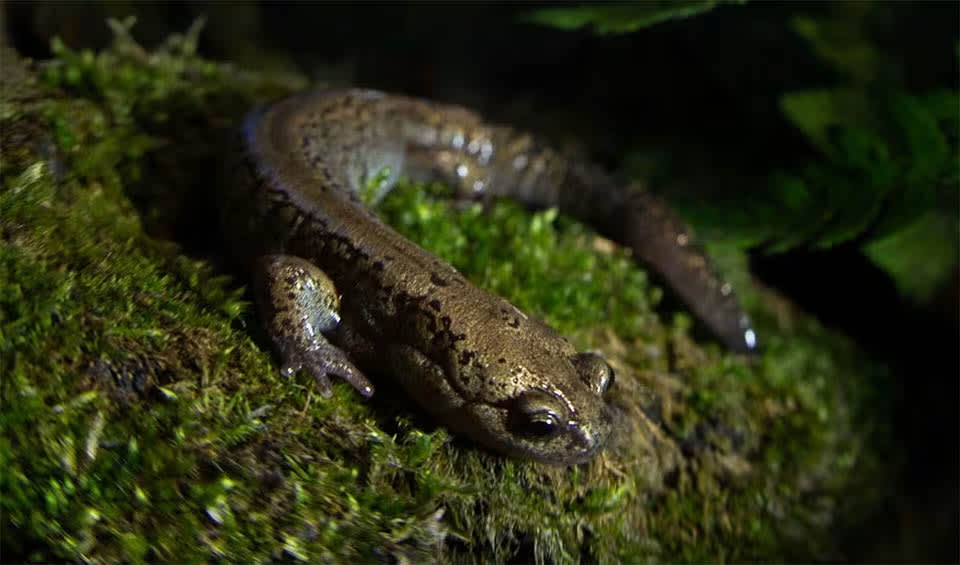Native to Siberia and parts of northeastern Asia, they are renowned for their ability to survive extended periods of freezing, which sets them apart from many other amphibians.
Measuring up to 13 centimeters (5 inches) in length, Siberian salamanders exhibit sexual dimorphism, with females typically being larger than males. Their relatively small size and slender bodies allow them to navigate efficiently through their cold and challenging habitats. Its body is predominantly dark brown or black in color, adorned with distinct yellow or orange spots, while its underside exhibits a yellow or orange hue.
One of the most astonishing aspects of Siberian salamanders is their remarkable ability to endure extreme cold and freezing conditions. These amphibians have been known to become encased in ice for years, deep beneath the frozen surface of their habitat. Astonishingly, when thawed out, they can regain mobility and continue their activities, seemingly unharmed by their frozen state. This unique adaptation allows them to survive in regions with harsh winter climates.
Siberian salamanders are not only resilient but also proficient swimmers and travelers. When in motion, they employ distinctive snake-like undulations of their bodies and tails, which facilitate efficient swimming and movement through their aquatic environments. They are also territorial creatures that protect their territory from other salamanders. They employ defensive tactics such as body displays and vocalizations to deter intruders. In cases where these warnings are ignored, the salamander may resort to biting as a form of aggression.
Distribution
 China
China Japan
Japan Kazakhstan
Kazakhstan Mongolia
Mongolia North Korea
North Korea Russia
RussiaAnything we've missed?
Help us improve this page by suggesting edits. Glory never dies!
Suggest an editGet to know me
Terrestrial / Aquatic
Altricial / Precocial
Polygamous / Monogamous
Dimorphic (size) / Monomorphic
Active: Diurnal / Nocturnal
Social behavior: Solitary / Pack / Herd
Diet: Carnivore / Herbivore / Omnivore / Piscivorous / Insectivore
Migratory: Yes / No
Domesticated: Yes / No
Dangerous: Yes / No





